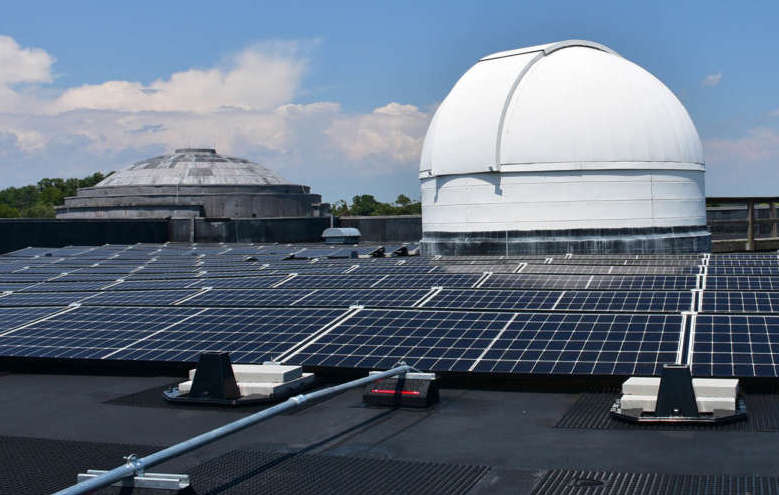Shepherd University is now home to the largest non-profit solar installation in West Virginia, thanks to a $100,000 grant from EBSCO Information Services of Ipswich, Massachusetts.
The rooftop installation of 189 solar panels atop the university’s Scarborough Library will generate at least 60 kilowatts of power took about three weeks to complete, according to Dr. Laura Renninger, dean of the Ruth Scarborough Library and Center for Teaching, Learning, and Instructional Resources.
“We are thrilled to be the first building at Shepherd to have a huge solar array on its roof,” Renninger said.
“This will be a huge savings for Shepherd at a time when it’s really important to be good stewards of our Earth and natural resources.
"I am excited about what our students and the community will learn from observing these panels, and I hope it will inspire others from the university and community to seek out funding so they can do the same with their buildings.”
Rachel Hally, library coordinator of collections, and Jeff Groff, chair of the Department of Environmental and Physical Sciences, wrote the grant for the array, and its installation was managed by Shepherd alumnus Brandon Nicolosi.
Nicolosi said the team worked hard to determine how to achieve maximum energy output.
“We designed the layout for the entire array and figured out how many panels we could get up there because we wanted to install as many as we could,” Nicolosi said.
“I believe this system will generate about 67,000 kilowatt-hours a year and could save roughly $120,000 over the lifetime of the system. Because this was grant-funded, that’s all savings for the university.”
Hally said she was particularly excited about alumni participation.
“I am thrilled with the outcome and that some Shepherd graduates had the opportunity to work on the project,” she said.
Dan Conant, founder and CEO of Solar Holler, which installed the panels, said the system will produce enough power to run five or six homes.
“The fact that we’ve been able to work with Shepherd on this hometown project has been rewarding and fun for us,” Conant said.
“It’s been meaningful to be able to help the university.”
Groff pointed out that the solar array, along with another array behind the Robert C. Byrd Science and Technology Center and another at the Shepherd University Agricultural Innovation Center (Tabler Farm) will also offer value from an educational standpoint.
“When we learn about solar energy in class, we now have three locations where we can demonstrate different technologies,” Groff said.
“Seeing a system like this and putting this system in the context of total energy consumption really is a good way to communicate how challenging the switch from fossil energy will be, how long it will take, and how much effort it will take in a sustained fashion.”
Sign up to receive a FREE copy of West Virginia Explorer Magazine in your email weekly. Sign me up!


